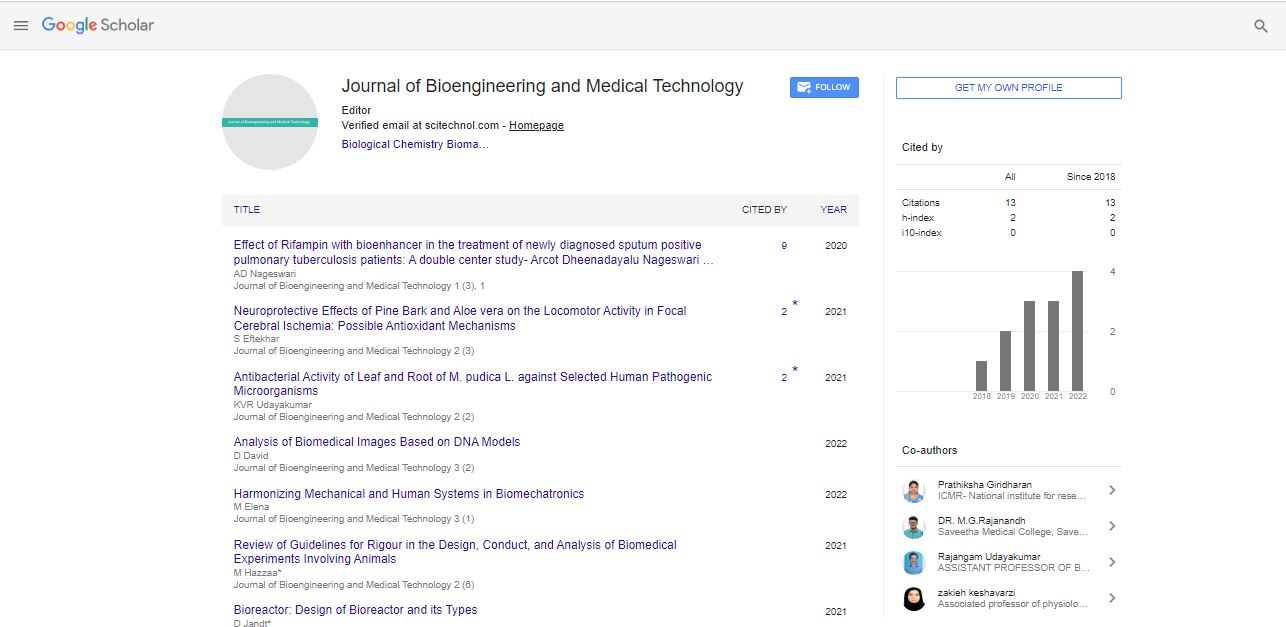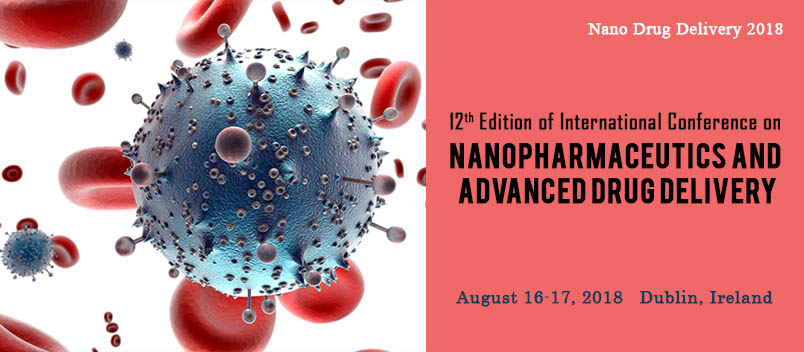Perspective, J Bioeng Med Technol Vol: 4 Issue: 2
Bioinspired Approaches for Medical Technology Design
Melinda Barber*
1Department of Medical Technology, Massachusetts University, Cambridge, United States of America
*Corresponding Author: Melinda Barber,
Department of Medical Technology,
Massachusetts University, Cambridge, United States of America
E-mail: barber254@melin.edu
Received date: 22 May, 2023, Manuscript No. JBMT-23-107419;
Editor assigned date: 24 May, 2023, Pre QC. JBMT-23-107419 (PQ);
Reviewed date: 15 June, 2023, QC No. JBMT-23-107419;
Revised date: 22 June, 2023, Manuscript No. JBMT-23-107419 (R);
Published date: 29 June, 2023, DOI: 10.35248/jbmt.1000072
Citation: Barber M (2023) Bioinspired Approaches for Medical Technology Design. J Bioeng Med Technol 4:2.
Description
In recent years, the field of medical technology design has witnessed significant advancements by drawing inspiration from nature. Bioinspired approaches offer innovative solutions to address complex challenges in healthcare, ranging from diagnostics and therapeutics to rehabilitation and prosthetics, by exploring the diverse applications of bioinspired design in medical technology, highlighting the principles and examples of biomimicry, biofabrication, and biorobotics. By harnessing nature's wisdom, analysts and engineers are paving the way for transformative breakthroughs in patient care and well-being.
The rapid evolution of medical technology has revolutionized healthcare, improving patient outcomes and enhancing quality of life. Bioinspired approaches, which involve imitating biological systems and processes, have emerged as an optimistic avenue for innovation which delves into the principles and applications of biomimicry, biofabrication, and biorobotics in medical technology design. By understanding and emulating nature's intricate designs, people can develop advanced solutions that mimic biological functionality and enhance medical interventions.
Biomimicry in medical technology
Biomimicry involves studying nature's designs, structures, and processes and applying them to human-made systems. In medical technology, biomimicry has found applications in diverse areas, such as materials science, robotics, and imaging. For example, the development of synthetic materials that mimic the structure and properties of human tissues has enabled the creation of biocompatible implants and scaffolds for tissue engineering. Inspired by the unique characteristics of gecko feet, analysts have designed adhesive materials for surgical tools, facilitating minimally invasive procedures.
Furthermore, robotics inspired by animal locomotion has led to the development of agile and versatile medical robots. By studying the movement of animals like snakes and insects, analysts have enhanced robotic systems capable of navigating complex anatomical structures or performing delicate surgeries with precision.
Biofabrication for medical applications
Biofabrication combines tissue engineering, biomaterials, and 3D printing to enhance functional living tissues and organs. Mimicking the natural process of tissue growth, biofabrication techniques have shown great potential in regenerative medicine and transplantation. Analysts have successfully fabricated artificial skin, blood vessels, and even complex organs like the liver and heart using bioinks composed of living cells and biocompatible materials.
In addition to organ replacement, biofabrication can also aid drug discovery and testing. By using organ-on-a-chip technology, analysts can reproduce miniature functional human organs for drug screening, reducing the need for animal testing and expediting the development of new therapies.
Biorobotics for medical interventions
Biorobotics integrates principles from biology and robotics to produce machines that mimic or interact with living organisms. In the medical field, biorobotic devices are revolutionizing rehabilitation and prosthetics. Exoskeletons inspired by human musculoskeletal systems help restore mobility and improve the quality of life for individuals with disabilities. These robotic systems can assist with movement, enhance strength, and aid in rehabilitation therapies.
Furthermore, neuroprosthetics based on biorobotics principles enable direct communication between neural signals and artificial limbs, restoring lost sensory and motor functions for individuals with limb loss. By integrating with the user's nervous system, these advanced prosthetics provide a more natural and intuitive control interface.
Conclusion
Bioinspired approaches offer tremendous potential for medical technology design. By studying and emulating nature's solutions, people can develop innovative devices, materials, and therapies that improve patient care and outcomes. The continued exploration of bioinspired approaches has the potential for transformative advancements in healthcare.
 Spanish
Spanish  Chinese
Chinese  Russian
Russian  German
German  French
French  Japanese
Japanese  Portuguese
Portuguese  Hindi
Hindi 
